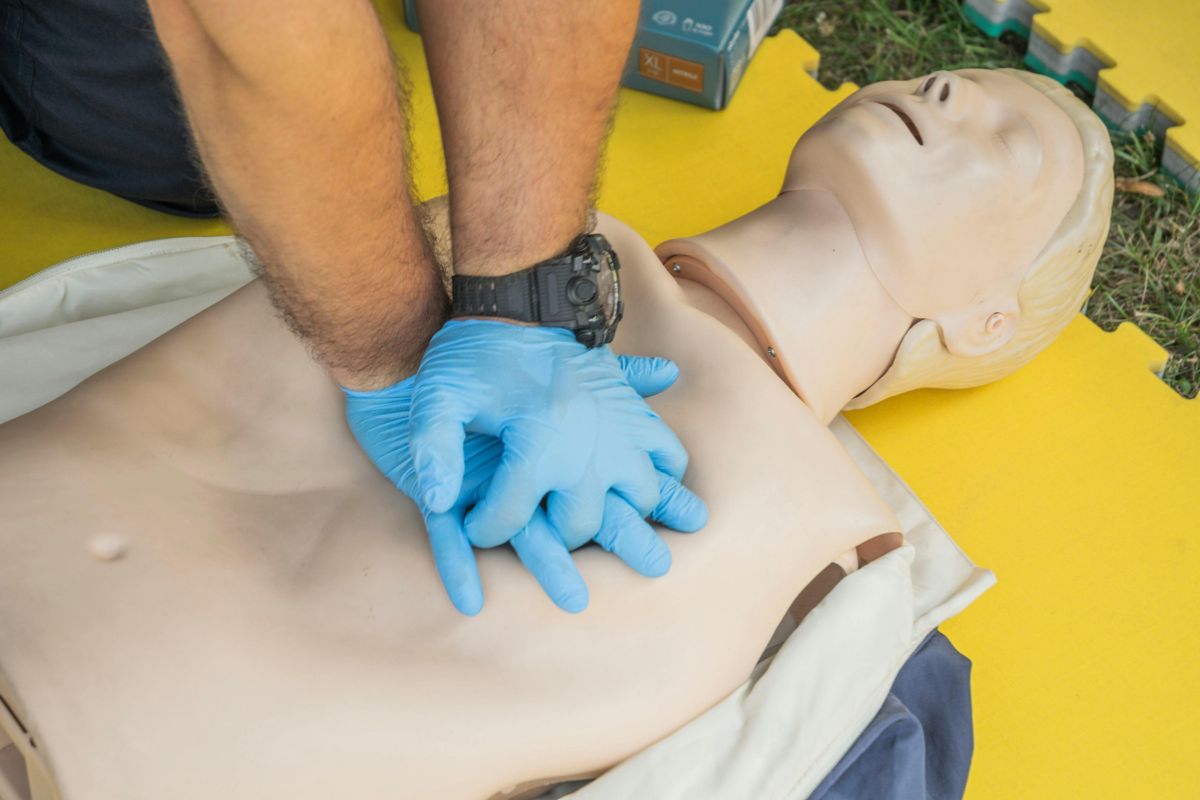Just approximately 10% of patients survive an out-of-hospital cardiac arrest. For such patients, quick and efficient therapy can literally save their lives.
That’s why Advanced Cardiovascular Life Support (ACLS) training is so important. Still, being ready for ACLS certification goes beyond simply passing a test. It’s about understanding just what to do during actual crises.
Some people concentrate exclusively on practical instruction, including CPR and defibrillation practice. Some people spend all of their time completing practice tests. To be really ready, though, you must strike a balance between both. For best success, this tutorial will walk you through how to blend free ACLS practice examinations with hands-on instruction.
What Does an ACLS Practice Exam Look Like?
An ACLS practice exam is a multiple-choice test designed to get you ready for the real certification exam. It comprises questions meant to gauge your knowledge of ACLS policies, emergency protocols, and moral judgment. Usually scenario-based, the questions ask you to determine the optimal response according to ACLS guidelines after describing a medical situation. An ordinary ACLS practice test consists of:
- Cardiac Rhythms: It addresses issues on an ECG strip, recognising both normal and aberrant heart rhythms.
- ACLS Algorithms: Follow the right procedures for treating disorders like bradycardia, tachycardia, and cardiac arrest.
- Medications: The test gauges your understanding of ACLS medications, including atropine, amiodarone, and epinephrine. You also need to know the right dosages and how they affect the heart.
- Airway Management: Questions centre on keeping a clear airway, employing oxygen delivery systems, and knowing intubation techniques.
- Team Roles and Communication: The test gauges your level of teamwork during a resuscitation situation.
Usually timed to replicate actual examination conditions, most free ACLS practice tests consist of 25 to 50 questions. To support learning, some provide reasons for right and wrong responses. Through several practice tests, you can find areas of weakness, hone your decision-making abilities, and boost confidence before the real ACLS certification exam.
Balancing Hands-On Training with ACLS Practice Exams
One needs more than just textbook knowledge to develop into a competent ACLS provider. Real emergencies call for prompt and accurate action on your part. This entails developing your knowledge of ACLS policies as well as your practical skills.
- Hands-on skills include doing effective CPR, using an AED properly, and managing the airway so the patient gets enough oxygen. These actions are essential during a cardiac emergency.
- At the same time, you must also know how to read ECG rhythms, follow ACLS algorithms, and use medications like epinephrine or amiodarone at the right time and dose.
- Focusing too much on just one area can hurt your performance. If you only practice the skills, you might find the written test confusing. If you only take practice tests, you may freeze during a real emergency. That’s why it’s important to train both ways.
Practising hands-on helps develop rapid, natural reactions. Practice tests help you to improve your clarity of thinking and decision-making power. Combining both increases your speed, precision, and confidence, qualities most important during a cardiac arrest.
Step-by-Step Guide to Balancing Hands-On Training and Practice Exams
By blending practice tests with hands-on ACLS training, you can develop both theoretical understanding and practical ability. Following a methodical approach guarantees that you learn ACLS rules and get confidence in applying life-saving procedures. The guidelines to apply to strike a balance between are:
- Understand the ACLS Course Structure
The ACLS certification process calls for both theoretical and practical instruction. Online or classroom courses address airway control, drug delivery, and cardiac arrest algorithms. On training mannequins, skills practice consists of doing excellent CPR, utilising an AED, and controlling airways. Multiple-choice questions on the written exam measure your knowledge of ACLS procedures. The skills test calls for you to show simulated scenario hands-on techniques.
- Start with Basic ACLS Practice Questions
You should build solid hands-on skills before trying practice tests. Many ACLS techniques—including intubation, defibrillation, and chest compressions—need physical practice to guarantee accuracy. While training videos assist in reinforcing skills at home, in-person ACLS seminars offer expert direction.
If you have a manikin, practise often compressions and airway control. Participating in a study group also lets you hone in a team environment. In real-life crises, it will help to increase confidence and coordination.
- Integrate Hands-On Training with Practice Exams
Introduce practice questions to help you grasp ACLS ideas once you have some practical experience. Online free ACLS practice tests address ECG interpretation, pharmacology, and emergency procedures. Start with 10 to 15 question mini tests covering particular subjects. Examine closely the explanations for wrong responses to grasp mistakes. Work on one topic at a time, say, bradycardia or tachycardia treatment.
- Take Full-Length Practice Exams
Combining exam questions with practical knowledge helps boost memory and reinforce learning. Take a CPR depth, rate, and ventilation guideline quiz following high-quality CPR practice. Review airway management and answer questions about oxygenation and intubation. Match suitable ACLS procedures with heart rhythms using ECG simulators. This approach helps you to apply theoretical knowledge to practical problems. Combining practical experience with hands-on instruction guarantees your readiness for the written test as well as for emergency reactions.
- Refine Weak Areas with Targeted Practice
Start doing full-length free ACLS practice tests once you are sure about specific subjects. These exams let you evaluate your preparedness by simulating the real certification test. Take the tests under timed conditions and reduce distractions to maximise the results.
Examining wrong responses closely helps one find flaws. Before sitting the actual examination, try to finish three to five full-length practice exams. Track your development to help you concentrate on areas that still require work.
- Improve Weaknesses Through Targeted Practice
Review your wrong answers from practice tests to find areas in which you need to work. Many students find ECG interpretation, drug dosing, or algorithm memorising difficult. Use ECG simulators for rhythm recognition and flashcards to recall medication dosages if you want to get better.
Visual aids and flow charts can assist in strengthening ACLS procedures. Invest more time learning subjects you find challenging and honing associated practical skills. Improving weak areas helps you to feel more confident and perform generally on the ACLS test.
Achieve the Perfect Balance for ACLS Success!
Balancing hands-on instruction with free ACLS practice tests can help you best get ready for your certification and real-life emergencies. Practical instruction strengthens muscle memory for airway control, defibrillation, and CPR techniques. Practice tests improve knowledge of ECG interpretation, prescription dosages, and ACLS algorithms. Combining both increases your confidence, precision, and rapid under pressure acting abilities!











